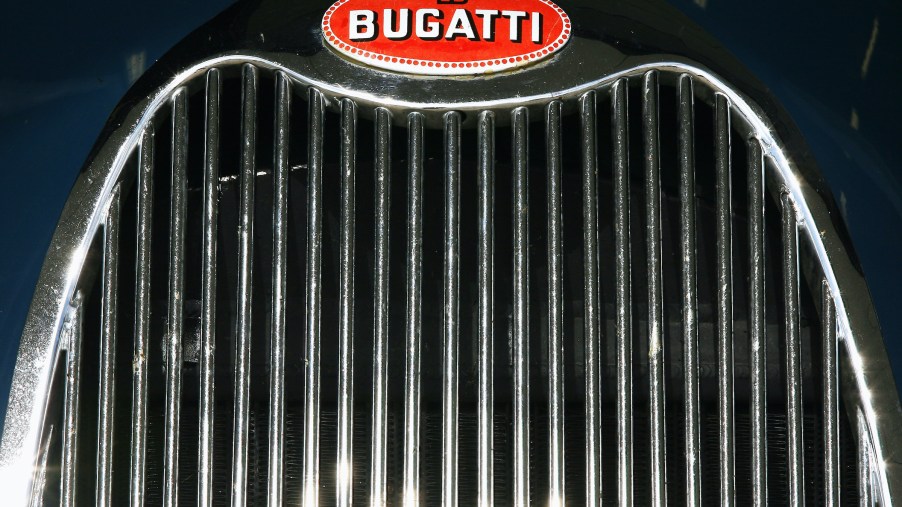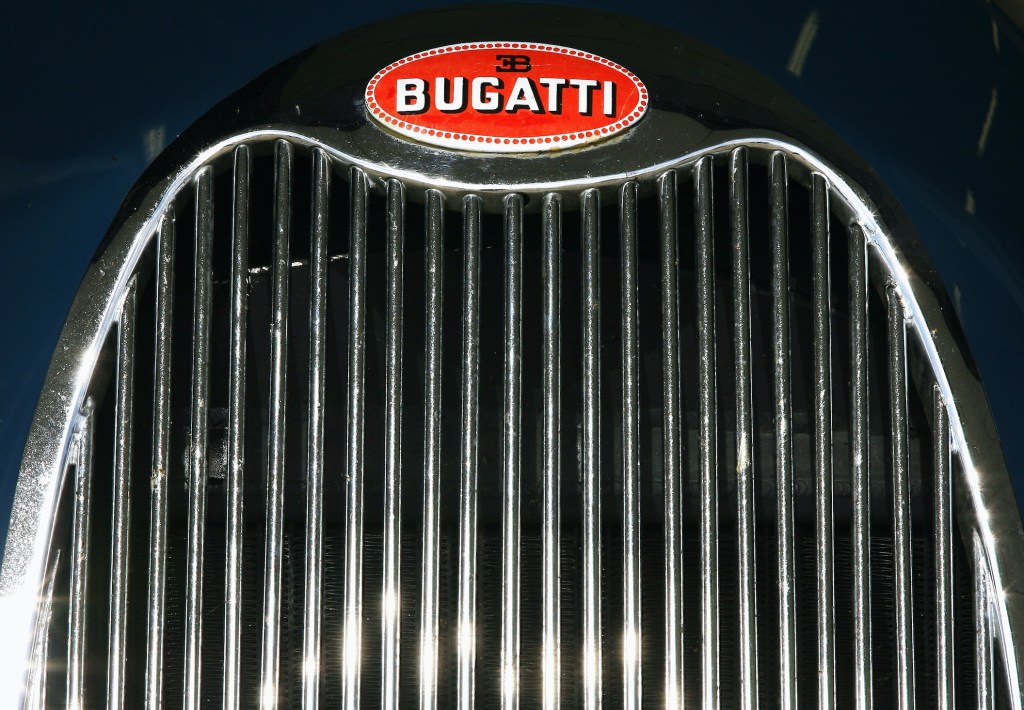
The Bugatti Badge Is Way More Special Than You Think
Bugatti is the top of the heap. We barely even consider Bugatti in the car conversation. These cars exist in their own realm, where mere mortals mustn’t be concerned. It’s not hard to understand why these cars are so highly respected. Usually, they are the fastest production cars in the world, until this year with the SSC boys throwing down. Either way, Bugatti is top to bottom premier performance and luxury. One aspect of Bugatti’s greatness that may not be so easy to spot is its badge’s intricacy.
Bugatti’s Macaron
The red and white badge, the Macaron as it’s called, has gone largely unchanged since it was first used on the first production Bugatti, the Type 13, according to DriveTribe. This logo, compared to other stratosphere-level cars, can seem a little dull or plain.

Look at the “spirit of ecstasy” of Rolls-Royce, the “flying B” of Bently, or the “leaper” of Jaguar; these over-the-top and clearly fancy ornaments seem costly in both time and money, but none of them come close to the time and money spent on Bugatti’s little red oval.
What makes it so special?
According to DriveTribe, the original version was designed simply but intentionally by Ettore by “cutting a cylinder with a 45mm diameter at an angle of 30 degrees.” The White lettering with the bright red background was a commanding logo, especially in 1910. Ettore surrounded the red oval with white trim and inside of it, 60 red dots. In true turn-of-the-century-French fashion, the red dots were meant to evoke the pearls of the Art Neuvo movement.
DriveTribe goes on to explain the colors have a specific and deliberate meaning as well. The red is meant to represent passion and power, the black of Ettore’s initials is said to represent courage and excellence, and the white for nobility and elegance.
The Macaron seems unchanged, but is it?
While most automakers have updated and even fully changed their badging over the years, Bugatti’s badges look basically the same as they did on day one; but are they really?
Because of the bespoke and hand-made nature of these cars, the badges also follow suit. Bugatti takes its badging so seriously that according to the marque president, it is one of the only parts of the car that they don’t sweat trying to save weight. The badge itself weighs over a quarter of a pound. DriveTribe goes on to say that the badge takes about 10 hours of work between 20 employees.
For starters, the base of the nameplate is 970 sterling silver. It is embossed many times to achieve sharper contouring than casting could. Though the enamel that used to be used was lead-based, the new stuff is totally free of toxins. The compound Bugatti now uses can permanently fuse with the silver when melted, making for the convex curved shape of the badge.
The inconsistencies aren’t imperfections they are proof
The final steps of finishing the Macaron call for hand polishing of the badge. Even if Bugatti got down with a machine doing this step, it couldn’t because of the plate’s curved shape. No machine can do it well enough. The finished product shows small pores in the enamel that Bugatti says are not imperfections, but instead, they are proof of a handmade and unique product that owners should be proud of. I like that.



